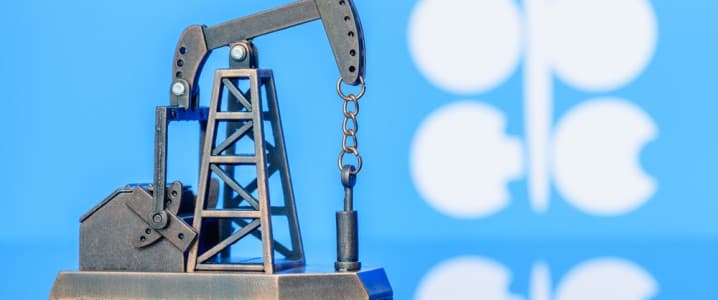The OPEC+ producers raised their combined crude oil production by 335,000 barrels per day (bpd) in July, below the 411,000 bpd output hike eight of the 22 producers have pledged for last month.
OPEC-only production from the 12-member cartel increased by 263,000 bpd—and most of the rise came from two major producers, Saudi Arabia and the United Arab Emirates (UAE), according to data from secondary sources in OPEC’s Monthly Oil Market Report published on Tuesday.
Saudi Arabia accounted for half of the OPEC+ production hike and two-thirds of the OPEC increase as its crude oil supply jumped by 170,000 bpd. This was expected as the Kingdom is OPEC’s top producer and has been shouldering a large part of the OPEC+ cuts.
What wasn’t so expected was that for a second consecutive month, OPEC’s report had an asterisk attached to the supply from its biggest producer.
Both secondary sources and direct Saudi communication said that output was 9.525 million bpd. But a footnote explained that “Saudi Arabia’s supply to the market was 9,360 tb/d and 9,525 tb/d in June and July 2025, respectively.”
At the same time, “Saudi Arabia’s production was 9,752 tb/d and 9,201 tb/d in June and July 2025, respectively,” according to OPEC’s footnotes.
Saudi Arabia has acknowledged that it pumped briefly above quota for several days in June during the Israel-Iran war when the markets feared a disruption to supply. The overproduction didn’t hit the market, the Kingdom claims, noting that the extra barrels went to storage.
The second consecutive confusing “supply to market” measure for Saudi Arabia comes as the OPEC+ alliance agreed early this month to boost output by 547,000 bpd in September, the hike that would complete the rollback of the 2.2 million bpd cuts. OPEC+ has one last remaining layer of production cuts of 1.66 million bpd, which are currently in force until the end of 2026, unless the group decides otherwise.
Elsewhere in OPEC’s production in the report, of note is that Iraq continues to try to compensate for previous overproduction by reducing output, and the UAE boosting its production by 109,000 bpd as it has won a higher baseline for 2025 and 2026.
By Charles Kennedy for Oilprice.com
More Top Reads From Oilprice.com

